


































































In the art world, some individuals are destined for creative expression from an early age. This innate calling often propels them towards a path of exploration and experimentation. Such is the case for British Art Prize 2023 finalist Ruth Swain. Growing up, she recalls a deep-seated desire to pursue artistry, ignited by a crucial moment at the age of seven. “I have always wanted to be an artist, ever since I was at primary school,” she reminisces. “When I was seven, I received a huge box of paints from winning a colouring competition, and that was a great feeling. I was told by my friends and teachers that I was good at drawing and that encouraged me to do more.”
Despite this early passion, Ruth’s journey took a detour into graphic design and advertising before circling back to her true calling. “However, when I moved to Hong Kong, advertising lost its appeal, and I began painting watercolour portraits of children.”
It wasn’t until her return to the UK and enrolment at The Art Academy London in 2018 that her artistic vision truly crystallised. “Studying Contemporary Portraiture was a breakthrough moment,” she reflects. “I began to better understand the art process and how to become a working artist.”
Drawing from a rich tapestry of influences, including her upbringing, studies and professional experiences, the artist’s eclectic portfolio spans portraits, figurative pieces and still life compositions. Each artwork is imbued with a distinctive narrative and a touch of humour. “I always want a painting to have a big idea, much like the best adverts,” she smiles.
Ruth’s artwork is not confined to a single medium, with forays into oils, watercolours and pastels alike. But it’s her fondness for storytelling and surrealism that truly sets her apart. “I try to find a new angle. I love surrealism and like to bring that into my work,” she explains. “I don’t just want to paint conventional portraits or figurative paintings; there needs to be a twist, a story; something to make you smile.”
It’s this commitment to innovation that continues to captivate audiences worldwide. With each brushstroke, the artist invites viewers on a whimsical journey into her imagination, where reality merges seamlessly with the surreal. “I want my paintings to be a narrative and make you ask questions.”
britishartclub.co.uk/profile/ruthswain ▫



This Romanian abstract artist captures the beauty of time’s passage in her paintings. Sara Mumtaz learns more about her process ▸

 Carnival of love, acrylic on canvas, 100x80cm
Carnival of love, acrylic on canvas, 100x80cm
From rendering realistic water to getting good source material, painting outdoor pools comes with a unique set of challenges. These three artists explain why turning the lidos of London into much-loved artworks is always a joyful experience.
By Rebecca Bradbury ▸

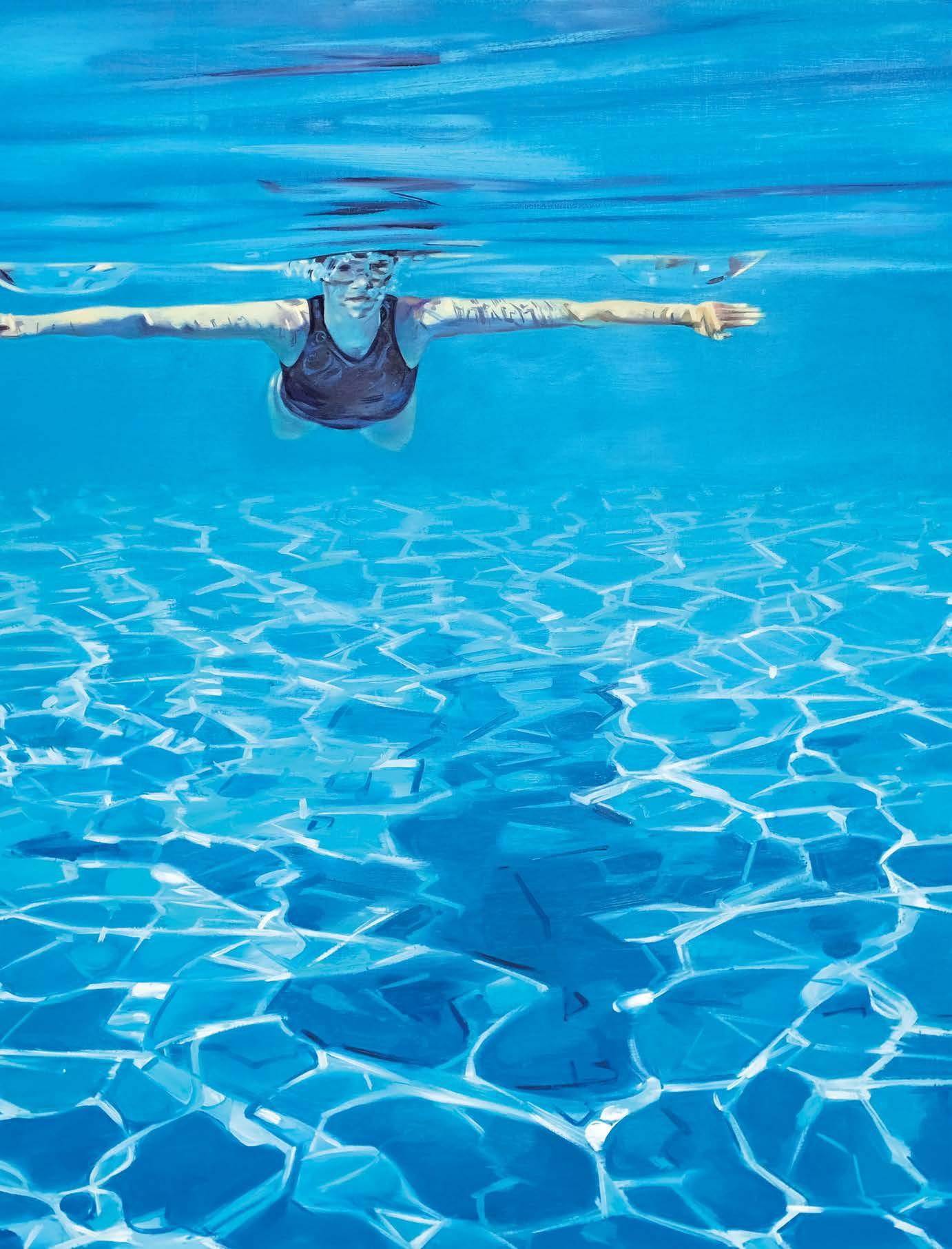 Priscilla Watkins, Jewel, oil, 50x50m
Priscilla Watkins, Jewel, oil, 50x50m















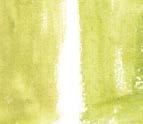







1First, pick a subject. I was inspired by a photo of lemon trees from a trip to Mallorca and decided this would be a good subject for a collage. Paint large swatches of colour, depending on what your subject is. Because I am painting some lemon branches, I added lots of di erent shades of yellow, green, some very pale pink, and a dark brown for the branches. As you can see, I didn’t just paint one yellow and one green; I created lots of variation, from bright, warm yellows to muted, almost green yellows. Spend a bit of time enjoying mixing the colours and painting lovely, big swatches. I recommend using a large square brush for this. Just the process of applying the paint to the paper and seeing so many lovely colours together feels restorative to me. Paint more swatches than you think you need so you have di erent options for the composition and then you can be less precious when cutting out your shapes.
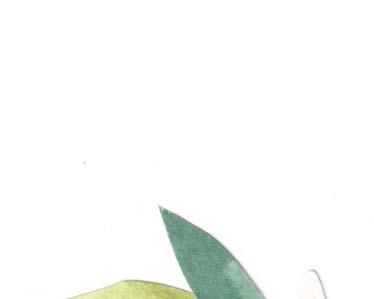
2When the paint is completely dry, start cutting out your shapes. I cut out the large blocks of colour to make them easier to handle, then I started to cut out the leaves, lemons, and owers. I have chosen to draw with the scissors and not use any pencil sketches, all the while referring frequently to my reference photo. If this feels too far out of your comfort zone, you can easily sketch in pencil on the back of the paper to give you a guideline to follow. However, I recommend going straight in with scissors if you can – there’s something innately mindful about creating the drawing as you cut rather than following an outline.




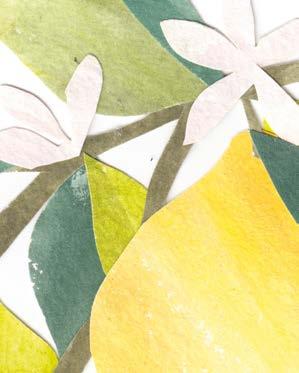






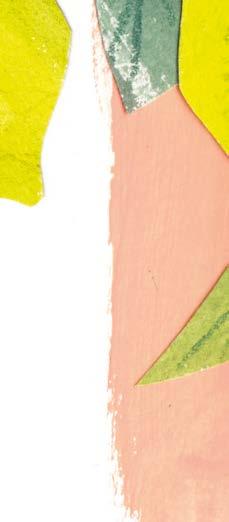







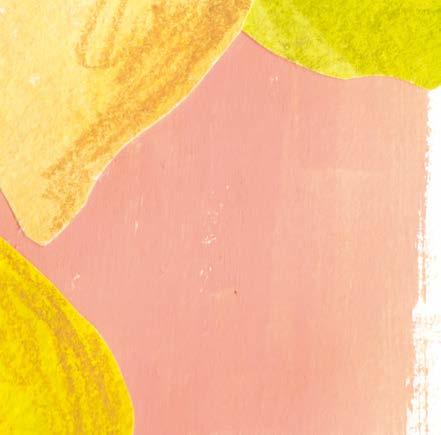



Once you’ve cut out your shapes, you can start to arrange them. I am taking inspiration from my reference photo, and I have no initial sketch, so I am simply allowing the composition to develop as I go along, moving a leaf here or there and seeing what works. That’s the joy of collage: you can move a piece around and try endless combinations and compositions before you stick things down in their nal place. I painted a rough peach background in my sketchbook, as I thought that would complement the colours of the collage. When I was happy with everything, I stuck it in place in my sketchbook using a glue stick (do note: liquid glue can be too wet and messy).
If you enjoyed this exercise, why not try adding more texture to your initial swatches? Use a dryer brush and allow streaks of white paper to show through to create an interesting texture. You could also use a wetter mixture and allow two colours to bleed together.


